 For my mother, Kate, who would have smiled so wide. And for my son Benjamin, who makes ME smile so wide.
For my mother, Kate, who would have smiled so wide. And for my son Benjamin, who makes ME smile so wide. 
Contents Introduction Tips and techniques Tea cosies Flowers and other fun stuff
Tea cosies are funny
Tea cosies are funny even when they are not meant to be funny. And tea POTS are very accommodating. They will not bemoan your handmade gift. They will not worry about the colour suiting their complexion, or that it doesnt quite fit. There will be no prissiness about scratchy wool.
They will not say how lovely and then hide it at the back of a cupboard somewhere. Make a teapot smile. Knit a cosy. Nothing complicated Some of the tea cosies in this little book might LOOK complicated to the beginning knitter. But they are NOT complicated at all. The cosies that look complicated are made up of a number of very simple components, each leading you to a beautifully constructed knitted sculpture.
If there is some technique you are not familiar with, how perfect to try it out on a tea cosy. Dont be shy! Have a go! Youll feel very pleased with yourself. 
Tips and techniques Knitting in the round on two circular needles Once you have mastered this technique, you will never want to knit in the round in any other way. Or conversely, you will lose your mind and never knit again. There are two very good reasons for trying out this method.

1.

1.
Like life, really The most important thing to remember when using this method is that there is always a WORKING circular set and a SLEEPING circular set of needles. You are constantly alternating between the two circular sets. It is only the yarn that goes round and round. By keeping the non-working stitches dangling out of the way on the flexible section of the sleeping circular set, you always know which stitches youre meant to be knitting. Its just a matter of alternating sleeping and working like life, really.  2.
2.
Casting On Cast on the desired number of stitches (plus one extra stitch) onto one set of circular needles. Now transfer the first half of the stitches onto the second circular set, leaving the extra stitch on the circular set holding the working thread. Push all the stitches down the needles to the other end to get access to the working thread again. Ensure that the stitches are not twisted around the needles.  3. Joining in the Round ** To join the stitches into a round, move the extra stitch (at the point where the working thread is) to the other circular set.
3. Joining in the Round ** To join the stitches into a round, move the extra stitch (at the point where the working thread is) to the other circular set.
The circular set that now holds the extra stitch is now your working set. Pick up your working circular set and knit the first two stitches together (the extra stitch and first cast on stitch) creating a firm join. You have just completed the only fiddly bit to the operation. Note. You only need to make the extra stitch when you are joining at cast-on or when joining two tea cosy sides together again. You will NOT make an extra stitch each time you move from one circular set to the other circular set.
You are already joined.  4. Working in ROUNDS When you finish knitting to the end of the stitches held on this circular set, immediately pull the needle through so that the stitches just worked are now sitting on the flexible section with the needle points dangling the new sleeping circular set. Pick up the previously sleeping circular set and pull the stitches back onto the needle point to meet with the working thread. With the new working circular set, knit all its stitches.
4. Working in ROUNDS When you finish knitting to the end of the stitches held on this circular set, immediately pull the needle through so that the stitches just worked are now sitting on the flexible section with the needle points dangling the new sleeping circular set. Pick up the previously sleeping circular set and pull the stitches back onto the needle point to meet with the working thread. With the new working circular set, knit all its stitches.  5.
5.  5.
5.
Working in ROWS To begin working the first side, work back across the stitches you have just made, using the same working circular set. You will now work in rows, not rounds. When Side One is complete, move the stitches to the flexible part of the circular set, to sleep while you attend to the other side of the tea cosy.  6. Joining in the thread to Side Two If you began Side One with the wrong side facing (e.g. a purl row in stocking stitch), then you need to begin the second side with the wrong side facing also.
6. Joining in the thread to Side Two If you began Side One with the wrong side facing (e.g. a purl row in stocking stitch), then you need to begin the second side with the wrong side facing also.
Work Side Two in ROWS.  7. Joining in the round again at the handle To begin working in ROUNDS again, you will need to make the extra joining stitch at the point where the working yarn is. The simplest way is to frog back one stitch, then knit into the front and back of the last stitch on that side. Follow the instructions from **.
7. Joining in the round again at the handle To begin working in ROUNDS again, you will need to make the extra joining stitch at the point where the working yarn is. The simplest way is to frog back one stitch, then knit into the front and back of the last stitch on that side. Follow the instructions from **.  8.
8.
Joining in the round again at the spout You will need to add an extra joining stitch at this end too and repeat as for Step 7. Continue to work in the round, alternating circular sets.  A tip: When changing from one set of needles to the other, make the first stitch and then pull the yarn firmly downwards to tighten the join between the two needles. This simple action will eliminate ridges at the needle changeover point.
A tip: When changing from one set of needles to the other, make the first stitch and then pull the yarn firmly downwards to tighten the join between the two needles. This simple action will eliminate ridges at the needle changeover point.  TO LINE OR NOT TO LINE To line or not to line, that is the question. The answer is LINE! Always make a lining if the pattern states.
TO LINE OR NOT TO LINE To line or not to line, that is the question. The answer is LINE! Always make a lining if the pattern states.
Really Wild Tea Cosies is filled with little knitted sculptures. Some are a bit weighty on top. A lining under the cosy body will give strength and extra warmth. And mostly importantly, it will look its very best.  Measuring up the right teapot Yes, yes. I know in my introduction I said that teapots are very accommodating, butteapots come in all shapes and sizes and I strongly advise you to have your pot in front of you the whole time, so that you can measure your work against it.
Measuring up the right teapot Yes, yes. I know in my introduction I said that teapots are very accommodating, butteapots come in all shapes and sizes and I strongly advise you to have your pot in front of you the whole time, so that you can measure your work against it.


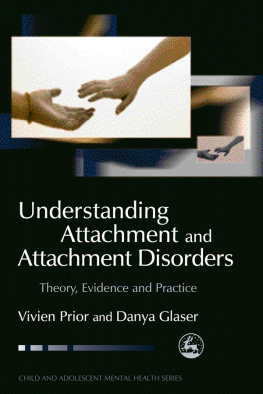
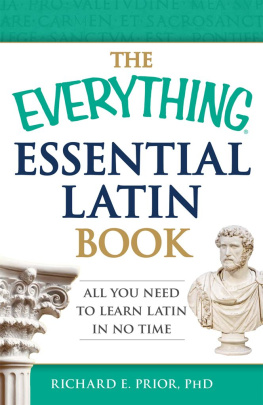


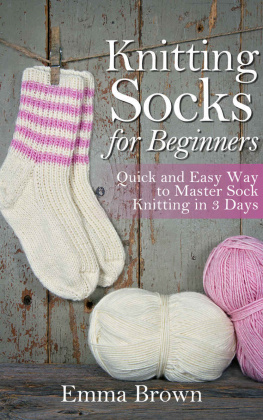

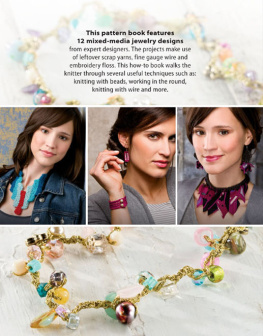
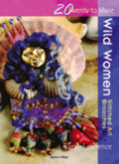

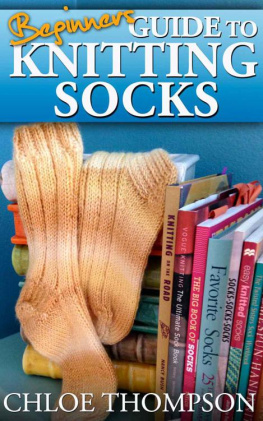
 For my mother, Kate, who would have smiled so wide. And for my son Benjamin, who makes ME smile so wide.
For my mother, Kate, who would have smiled so wide. And for my son Benjamin, who makes ME smile so wide. 

 1.
1.  2.
2. 3. Joining in the Round ** To join the stitches into a round, move the extra stitch (at the point where the working thread is) to the other circular set.
3. Joining in the Round ** To join the stitches into a round, move the extra stitch (at the point where the working thread is) to the other circular set. 4. Working in ROUNDS When you finish knitting to the end of the stitches held on this circular set, immediately pull the needle through so that the stitches just worked are now sitting on the flexible section with the needle points dangling the new sleeping circular set. Pick up the previously sleeping circular set and pull the stitches back onto the needle point to meet with the working thread. With the new working circular set, knit all its stitches.
4. Working in ROUNDS When you finish knitting to the end of the stitches held on this circular set, immediately pull the needle through so that the stitches just worked are now sitting on the flexible section with the needle points dangling the new sleeping circular set. Pick up the previously sleeping circular set and pull the stitches back onto the needle point to meet with the working thread. With the new working circular set, knit all its stitches.  5.
5.  6. Joining in the thread to Side Two If you began Side One with the wrong side facing (e.g. a purl row in stocking stitch), then you need to begin the second side with the wrong side facing also.
6. Joining in the thread to Side Two If you began Side One with the wrong side facing (e.g. a purl row in stocking stitch), then you need to begin the second side with the wrong side facing also. 7. Joining in the round again at the handle To begin working in ROUNDS again, you will need to make the extra joining stitch at the point where the working yarn is. The simplest way is to frog back one stitch, then knit into the front and back of the last stitch on that side. Follow the instructions from **.
7. Joining in the round again at the handle To begin working in ROUNDS again, you will need to make the extra joining stitch at the point where the working yarn is. The simplest way is to frog back one stitch, then knit into the front and back of the last stitch on that side. Follow the instructions from **.  8.
8. A tip: When changing from one set of needles to the other, make the first stitch and then pull the yarn firmly downwards to tighten the join between the two needles. This simple action will eliminate ridges at the needle changeover point.
A tip: When changing from one set of needles to the other, make the first stitch and then pull the yarn firmly downwards to tighten the join between the two needles. This simple action will eliminate ridges at the needle changeover point.  TO LINE OR NOT TO LINE To line or not to line, that is the question. The answer is LINE! Always make a lining if the pattern states.
TO LINE OR NOT TO LINE To line or not to line, that is the question. The answer is LINE! Always make a lining if the pattern states. Measuring up the right teapot Yes, yes. I know in my introduction I said that teapots are very accommodating, butteapots come in all shapes and sizes and I strongly advise you to have your pot in front of you the whole time, so that you can measure your work against it.
Measuring up the right teapot Yes, yes. I know in my introduction I said that teapots are very accommodating, butteapots come in all shapes and sizes and I strongly advise you to have your pot in front of you the whole time, so that you can measure your work against it.